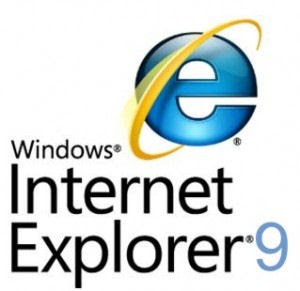
If you use Internet Explorer 9, here’s something you may be puzzling over. Each time you start it, a yellow-edged box appears at the bottom of the Internet Explorer window saying ‘Speed up startup and browsing by disabling add-ons’.
An ‘add-on’ is a small program that adds extra features to Internet Explorer. They’re not programs you directly use yourself, so you won’t find them listed on your Start menu, but Internet Explorer loads them every time it starts. Many of these add-ons are extra toolbars that appear near the top of Internet Explorer: quite a few search engine companies (among others) make toolbar add-ons that are supposed to make web-searching easier, and you might well have a toolbar from Google, Ask.com, Yahoo! or Microsoft Bing. (Indeed, you might have ended up with several of these toolbars!)
There are also less-noticeable types of add-on – things that only make an appearance in particular circumstances. For instance, some add-ons play video files, and will only appear in web pages that contain one of those videos; Adobe Reader installs an Internet Explorer add-on that displays PDF files whenever you come across them on a website.
When you start Internet Explorer, and it goes through the process of loading all its add-ons, it keeps an eye on how long each add-on takes to load and start itself up. If the add-ons take a long time to start (well, more than a fifth of a second, which IE9 regards as quite long enough), that yellow-edged bar appears, suggesting that you might like to disable the add-ons that are persistently slow, which should improve Internet Explorer’s speed.
There’s another, less-obvious reason for this bar to appear: it’s to let you know that these added toolbars and other extras actually can be removed. Many users just accept that they seem to have extra rows of buttons and options in Internet Explorer that their friends and family don’t have, and even though they never use these bits and pieces, they don’t realise that they can be removed.
If this bar does appear, click the Disable add-ons button it presents and you’ll see a dialog listing all the add-ons that Internet Explorer has been loading. These are arranged in order of speed, with the ones that load most slowly at the top of the list. Each add-on has a ‘Disable’ button beside it: clicking that button tells IE9 to unload that particular add-on and not load it in future. Exactly what you do next depends on what you see in the list, but I’ll make two suggestions:
• First, disable the items at the top of the list which are taking a (comparatively) long time to start – anything over 0.02 of a second – by clicking the Disable buttons beside them.
• Second, have a look down the list for anything that seems unnecessary. Admittedly, you won’t necessarily know what all these add-ons are, which makes this step a bit tricky, but anything with the word ‘toolbar’ in its description is a good candidate for disabling: unless you actually use these toolbars, they’re just cluttering up the window.
Any changes you make here are reversible, so if you do find you’ve disabled a toolbar you actually use, you can enable it again. Click the little cog-shaped button at the right of Internet Explorer’s window, choose Manage add-ons, and you’ll see a slightly-different list of all add-ons, with a note beside each of whether it’s enabled or disabled. Find and click the one you disabled and want to get back again, then click the Enable button at the bottom of the dialog.
___________________